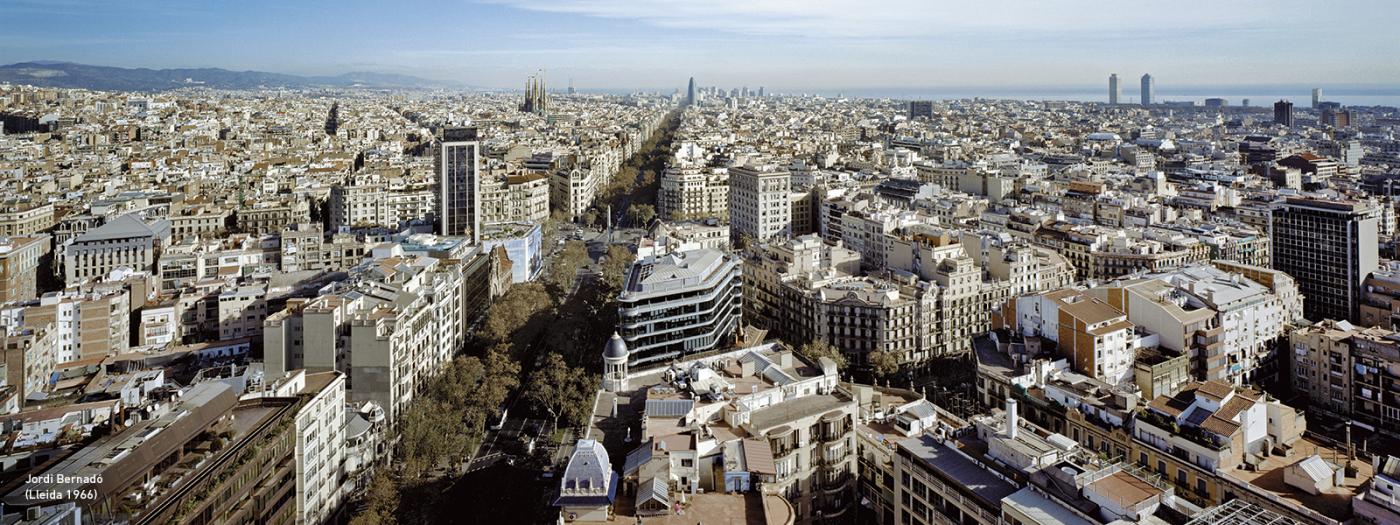Energy is the basis of all human activity. It has been, is and will be a motor of social, economic and cultural change. It has been that way since man learnt to use fire in a controlled form. Historically, energy has represented the most evident and palpable relationship between technology, economy and culture. Yet, nowadays most of the big figures and statistics on energy do not inspire optimism. The emissions released from the combustion of fossil fuels are dangerously raising the global atmospheric CO2 concentration and causing smog formation in metropolitan agglomerations to the degree that the planet is warming and cities are drowning. Climate emergency is being declared by states and supra-state political structures as a SOS signal from a civilization in deep environmental decay.
A new Energy Transition is on the political agendas of many, but grounding of the civilization survival needs and apparent political will is slow and weak. The worldwide greenhouse gas
emissions are still rising and over 80% of energy moving the world is from fossil origin. A paradigm shift of global energetics is urgently needed. At the same time the contemporary city is witnessing a significant change in energy demand patterns as new forms of consumption expand quickly. In the era of global warming and perturbed climate in densely built areas, together with new comfort expectations, the global demand for space cooling is growing at a particularly rapid rate, and projected to grow even more in the coming decades. The demand growth and emissions reduction need represent an authentic energy aporia which fully impacts architectural design.
On the other side, for the first time in the history of the architectural profession the climate is not any more a fix condition. For the first time an architect should face the fact that the building to be designed is going to last more than the climate conditions at the moment the building has been designed.
Hold a Bachelor in Architecture or in Engineering.
The Seminar goals are targeting to:
- Contextualize the site: un-learn the "generic architecture" approach
- Understand the new conditions for architectural project: building is going to operate under evolving conditions: climate, user expectation, technology, etc.
- Positioning energy as a design driver in architectural design
- Learn about the trends in energy infrastructures and the place of building within the energy transition ecosystem and a new demand-supply constellation
- Discuss the environmental site conditions of the place for Transverse MIAD Workshop.
The Seminar focuses on a dynamically interacts of built object with both its natural and its technological environments, turning it in a active node of energy networks. The scope of the Seminar ranges from physical concepts, big picture facts, to design examples.
The Landscape of Energy Seminar is a part of Environmental Logics Unit, that explores the design challenges and opportunities embedded in the climatic and resource crisis which faces the planet. The objective of the Seminar is to deepen in the contemporary questions and paradigm changes, as well as to explore the ways forward. It is going to evolve in parallel to the Environmental Logics Workshop, tackling also the main topics of the Workshop: metabolic, climatic and post-occupancy logics.
The Seminar will consist on 5 sessions. Each one of the five session will be structured as follows:
- Lecture
- Short exposition on a selected topic prepared and presented by a reduced group of students
- Discussion, among all the class, on the same topic.
The sixth session will consist of a Masterclass by invited lecturer followed by discussion.
The pedagogic framework aims to provide a wide contextualization and understanding of energy in its physical and social dimension, in order to acquire analytical skills, to stimulate critical and creative thinking and to connect global challenges with the design decisions.
Besides the formal classes carried out with the instructor, the practical, experiential learning will be encouraged. The students will be asked to conduct short researches in form of walk through experiments, including sensing urban climate and/or building thermal comfort.
Students are requested to submit the final essay, in short written form, or an environmental statement for a selected project site and program. The suggested extension is 4-5 DIN A4 pages written text; in case of complementary use of graphic expression the extension may fluctuate.
System MIAD for grading exercises:
0 - 4.9 Fail (this means that the tutor will have to ask the student to submit a supplementary work).
5.0 - 6.9 Pass.
7.0 - 8.9 Good.
9.0 - 10 Excellent/Distinction.
On this basis, students will be evaluated on several aspects such as: Attendance - 10 %
Discussions and participation- 25 % Selected topic presentation - 25 % Final essay - 40 %
Addington, Michelle, "Contingent Behaviours", in AD Vol 79, No 3,Willey, May/June 2009 Pp 12-17
Ivancic, Aleksandar, "EnergyScapes", Gustavo Gili, Barcelona, 2010
Ivancic, Aleksandar, "Fire in Urban Genesis" , in "Imminent Commons: Urban Questions for the Near Future" ed. Alejandro Zaera-Polo, Hyungmin Pai (eds.), urbanNext, Actar Publishers and Seoul Biennale of Architecture and Urbanism, 2017
Latour, Bruno, "First Lecture: On the Instability of the (notion of) nature" in "Facing Gaia: Eight Lectures on the New Climatic Regime", Polity Press, Cambridge, UK, 2017, pp 7-40
Moe, Kiel, "Thermally Active Surfaces in Architecture", New York, Princeton Architectural Press, 2010
Pawlyn, Michael, "Biomimicry in Architecture", Riba Publishing, London, 2011 Smil, Vaclav, "Energy at the Crossroads", MIT Press, Massachusetts, 2005
